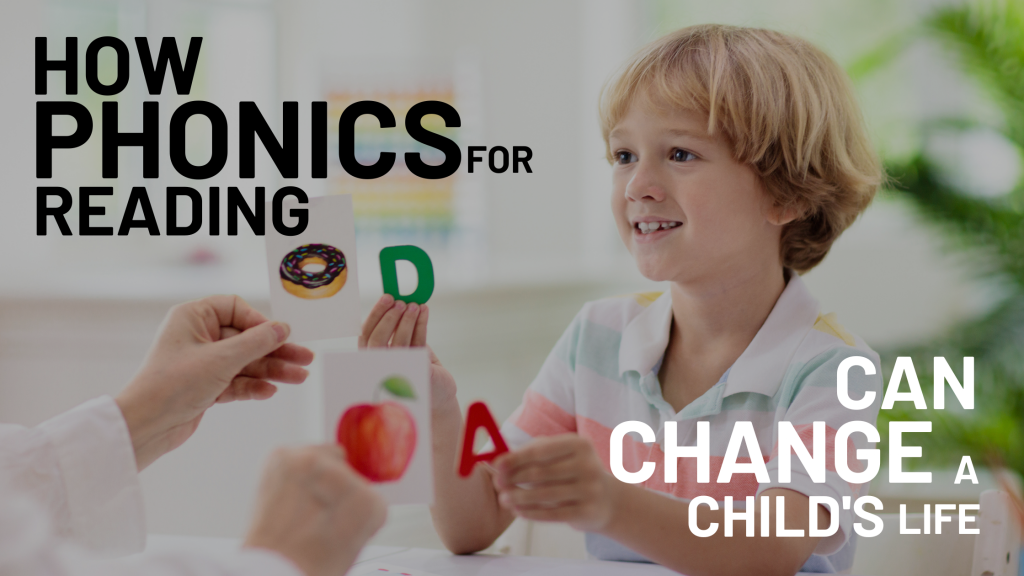Introduction
In the fast-paced digital age, cultivating strong reading skills in children has become more critical than ever. While technology offers new learning avenues, the foundation of literacy still rests on traditional reading techniques. Among these, phonics for reading emerges as a powerful and effective approach to nurturing reading abilities from an early age. In this comprehensive guide, we’ll explore the world of phonics, its impact on young readers, and strategies to harness its potential for reading success.
Phonics for Reading: Building Blocks of Literacy
Phonics, often termed the cornerstone of reading, focuses on the relationship between sounds and letters. It equips children with the skills to decode words by understanding the sounds each letter or letter combination makes. The approach enables kids to independently decipher words, boosting their reading fluency and comprehension.
The Magic of Phonics Unveiled
Understanding the intrinsic connection between letters and sounds is the key to unlocking fluent reading. As kids grasp the sounds of individual letters and phonemic patterns, they can decode unfamiliar words more confidently. Phonics for reading involves breaking down words into phonemes, the smallest sound units in a language, making reading less intimidating and more enjoyable.
Statistics on the Use of Phonics in Reading Education
Example of How Phonics Can Help Kids Learn Reading
Imagine a young child named Emily embarking on her reading journey. She’s excited but encounters a new word in her storybook: “jump.” Unsure of how to pronounce it, she turns to her parent for help. This is where phonics comes into play.
Emily’s parent explains that words are made up of smaller sounds, like puzzle pieces. They break down “jump” into its sounds: /j/ – /u/ – /m/ – /p/. Emily practices saying these sounds, then blends them together: “j-uh-m-p.” Suddenly, the word “jump” becomes clear and familiar to her.

As Emily reads more, she encounters similar words. With each word, she applies her understanding of sounds and letters, making connections she can use again and again. The once-daunting process of reading becomes a fun game of decoding and discovering. Emily’s newfound skills empower her to tackle more complex words and stories, boosting her reading confidence.
In this scenario, phonics serves as Emily’s secret weapon, enabling her to independently read and explore a world of literature. This example showcases how phonics bridges the gap between letters and sounds, transforming unfamiliar words into stepping stones of comprehension and excitement.
Strategies to Foster Phonics Proficiency
- Engaging Rhyming Games: Rhymes are a fantastic way to introduce phonics to children. Games that involve matching words with similar sounds lay the foundation for recognizing sound patterns.
- Interactive Alphabet Activities: Transform learning into play by using interactive tools like alphabet puzzles, where kids match letters to their corresponding sounds.
- Storytime Exploration: Reading aloud phonics-based stories enriches vocabulary and reinforces the connection between letters and sounds.
- Phonics-based Apps: Explore educational apps designed to make learning phonics entertaining and engaging for tech-savvy youngsters.
- Word Families Exploration: Introducing word families (groups of words with the same ending sound) aids in recognizing common phonetic patterns.
- Sight Word Integration: While phonics focuses on decoding, sight words should also be introduced to enhance overall reading fluency.
Empowering Parents: FAQs about Phonics for Reading Kids
Q: When should I start teaching phonics to my child? A: It’s beneficial to start as early as preschool, but adjusting to your child’s readiness is essential.
Q: Are there specific phonics methods that work best? A: Different methods suit different children. Phonics instruction can be systematic, analytic, or embedded within literature-based activities.
Q: How do I maintain my child’s interest in phonics? A: Make learning enjoyable through interactive games, reading sessions, and incorporating phonics into daily activities.
Q: What if my child finds certain phonetic rules challenging? A: Patience is key. Provide ample practice and ensure learning is gradual, reinforcing difficult concepts.
Q: Can I combine phonics with other reading approaches? A: Absolutely. Phonics complements other strategies, enhancing overall reading competency.
Q: Are there online resources for phonics learning? A: Yes, numerous websites and apps offer interactive phonics lessons and activities.
Celebrating Reading Victories: The Role of Phonics for reading
As children progress in their reading journey, the application of phonics becomes evident through their improved decoding skills, enhanced vocabulary, and increased confidence in tackling new words. This solid foundation lays the groundwork for a lifelong love of reading, which is indispensable in an information-driven world.
Conclusion
The journey of learning to read is transformative, and the role of phonics for reading in this journey is undeniable. By introducing children to the sounds of language and how they relate to letters, we empower them to become proficient and enthusiastic readers. Through engaging activities, strategic approaches, and a supportive environment, parents and educators can pave the way for reading success. So, dive into the world of phonics and watch young minds flourish in the realm of literacy.
🌟 Stay Connected and Engage with Us! 🌟
📌 Follow us on Pinterest: Explore a world of inspiration and knowledge! 📌
🗨️ Leave a Comment: We value your thoughts and insights. Share your opinions and spark meaningful discussions. 🗨️
📚 Check Out Our Other Blogs: Delve into a treasure trove of informative articles, each crafted to enrich your understanding. Plus, find fresh perspectives and exciting topics to explore! 📚
Related blogs:
FUN PHONICS GAMES AND ACTIVITIES FOR KIDS: EXPLORE NOW!
BEST PHONICS APPS FOR KIDS TO HELP WITH READING
💌 Subscribe to Our Blog: Never miss an update or a captivating read. Subscribe to our blog and be the first to receive new content directly in your inbox. Stay informed and engaged! 💌
Your participation fuels our community of learners and thinkers. With each like, comment, and share, you contribute to a vibrant exchange of ideas. So, come join us on this journey of knowledge discovery! 🚀
Yours sincerly Sam


Pingback: Discover the Best Phonics Books for Kids -
Pingback: Julia Donaldson: the Ultimate phonics book collection -